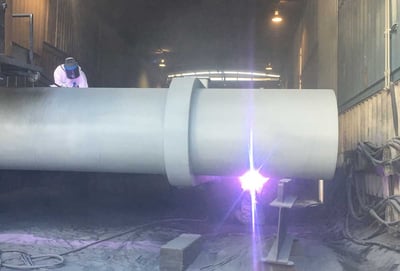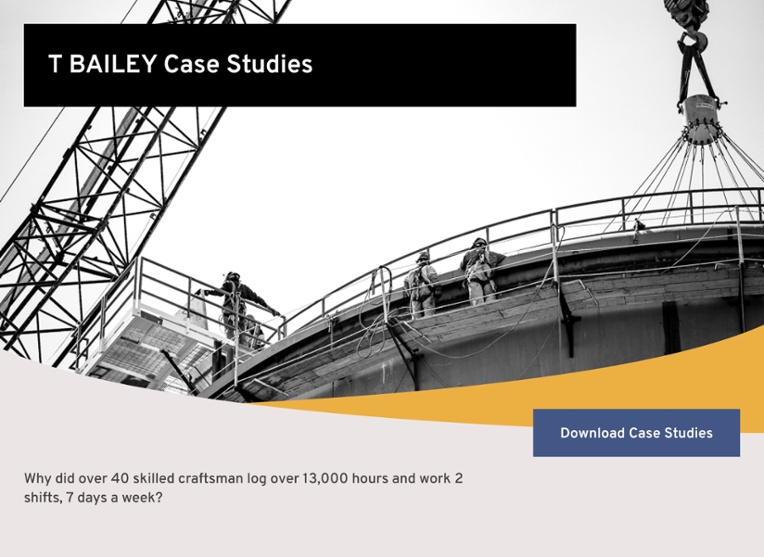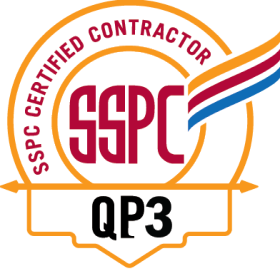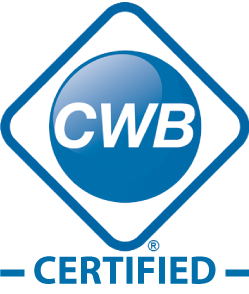When a steel product is going to be exposed to harsh elements, it is important to protect it against corrosion and wear with a coatings system. Environments like petrochemical plants, marine environments, and pedestrian traffic areas are worth considering for a coatings system.
Considering Different Coating Systems
Metalizing and galvanizing are two coatings systems that can be applied along with a coating as part of a duplex coating system. There are advantages and disadvantages to both systems that should be considered when determining which is best for your project.
What Is Galvanizing?
Hot-dip galvanizing is the process of immersing steel in a zinc bath to produce a corrosion resistant, multi-layered coating of zinc-iron alloy and zinc metal. The galvanizing kettle contains zinc specified to ASTM B6, which specifies the grade of zinc.
On occasion, other metals are added to the zinc in accordance with the desired coating system. Once removed from the kettle it is removed to cool. Depending on the coatings system, there might be other post-treatment steps to enhance the galvanizing coating. This process creates a uniform thickness throughout and creates a long-lasting corrosion protection at a reasonable cost.
The process is inherently simple but comes with limitations. Since the galvanizing process involves dipping the steel into multiple kettles, there are size restrictions on what can be processed. Depending upon the final size of your project, metalizing or partial galvanizing might be a better solution. Additionally, once an item has been galvanized it is difficult to regalvanize it down the road should repairs be necessary.
What Is Metalizing?
Metalizing is the application of metal wire of zinc, aluminum, or a combination of metals spray fed by two opposing polarity wires through a machine. When the wires meet they are electrically charged with opposing polarity, causing them to create a molten arc and – with the assistance of compressed air to atomize and propel onto the steel – form a coating.

Surface preparation for metalizing requires an abrasive blast media of proper size to achieve a sharp angular profile. Metalizing conforms to industry standards SSPC, AWA, & NACE. There are several advantages and characteristics of metalizing when compared to galvanizing.
- Size: Metalizing allows for the ability to apply the protective coating onto large stationary structures that are too large for galvanizing kettles.
- Time: Metalizing solidifies instantly which aids in getting parts, pieces, or structures back into service sooner by eliminating the time associated with galvanizing and the multiple dip process.
- Location: Metalizing can be applied in the field or in a shop environment. Since the metalizing equipment is portable, many marine environments or structures that can’t be moved (such as bridges) will utilize metalizing over galvanizing.
- Flexibility: Metalizing can be used as a protective barrier to protect steel parts, or it can also be applied to walking surfaces in an anti-slip or non-skid type application. Once metalizing is applied, it can be left as is, or top coated if a specific color is required or desired. Metalizing can also be applied to structures that have been previously galvanized or metalized, allowing for repairs.
- Durability: Metalizing can be applied to all metal surfaces with the ability to control surface texture from light to heavy/aggressive military grade. It will instantly cure, and when properly sealed, will withstand weather conditions.
Metalizing can provide up to 25 years of corrosion protection. If you wish to have your product galvanized, but recognize the finished form is too large for a galvanizing kettle, there might be a compromise. Depending upon the nature of your project, it is very possible to hot dip galvanize sub assembled pieces, have them welded to together, and then metalized at the welded seams.
The Facilities and Experience Needed
T BAILEY LLC can would be happy to help in the coatings process, and has a certified coatings department at our fabrication facility that are well trained and versatile in a variety of application methods.








